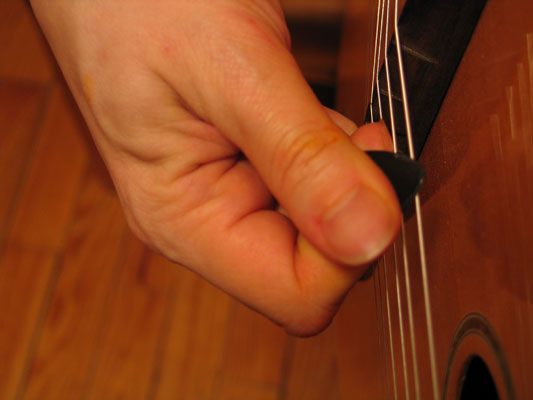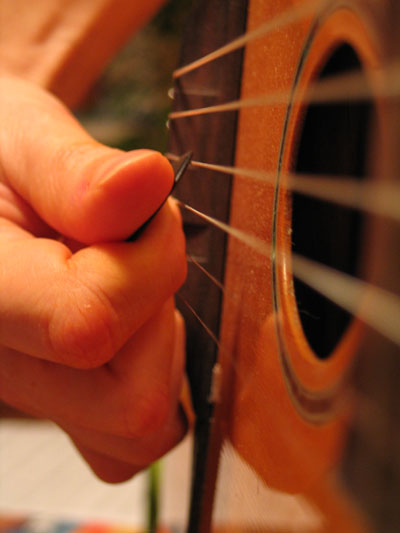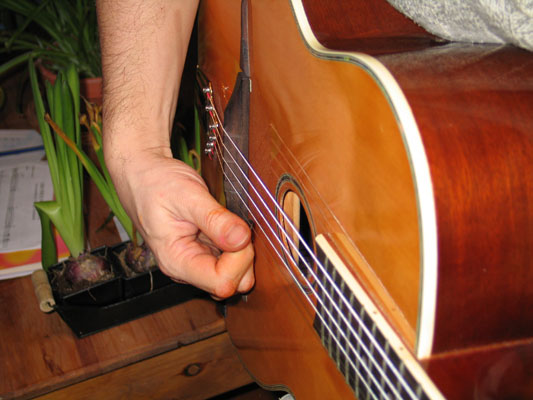Right hand position
Introduction
Indications here are for the right-handed. Left-handed should reverse everything.
The wrist is not stuck on the guitar body. This is the most typical aspect and probably one of the most difficult things to get when you have played guitar the "occidental" way for years. In Manouche style, you have to start over from scratch and above all not get disheartened because of this technique that takes a bit of time to integrate.
When starting learning this position, it is recommended to work in front of a mirror.
The reason this technique is used, as a Manouche guitarist told me last year, is that it makes the sound typical and strong because, on one hand, the floating wrist allows the sounding board to vibrate without dampening the sound, on the other hand, the weight of the hand will greatly contribute to the attack on each downstroke (which I write -v- later on). Upstrokes (-^-) are less strong and typically will be used as little as possible. The pick hits the strings between the bridge and the rosace, which gives its typical brightness to the sound.
Rules of thumb
- Always use downstrokes when changing string
- In case it is impossible to use downstrokes when changing string, please refer to the previous rule. It is possible and it will come with time.
- The folding at the elbow, between the arm and the forearm should rest firlmy on the edge of the guitar body.
- The wrist is "broken" with a 100°-110° angle, a little more open than the right angle. Everyone should actually find the angle that suits him best to obtain the best trade-off between sound and comfort.
- The pick is held quite firmly between the thumb and the index but there should be no contraction. If the pick spins as is quite usual at the beginning, do not get discouraged.
- Every pick stroke comes from a circular movement of the wrist around the axis of the forearm. The forearm is usually not used to help picking the strings (excepted for very fast alternate picking).
- To change strings, rotate your forearm around the elbow axis, use the forearm as a guide.
Points not specified by the tradition
- The ear finger can touch the guitar body, but very lightly - it should not be stuck there, in order to help hitting the correct string for instance. It's up to you to do this or not.
- The wrist can be closed around the pick (Biréli Lagrène's way) or the fingers can be complety unfolded (Jimmy Rosenberg).
- The guitar body can be held tight against the belly or there can be some space.
- Strings can be picked very close to the bridge but the strings might break more often, and the sound can also become too bright.
- The guitar is stuck on the right leg which in turn should be a bit heightened for a better comfort. Quite a few people put their right foot above the left to heighten their right leg.
- The pick can be a little slopy compared to the thumb axis.
Pictures
The following pictures illustrate aspects of the Manouche position of the wrist and of the right hand.
Angle between the pick and the thumb axis
Incidence angle of the pick on the strings
Full view of the wrist and incidence angle of the pick - Rest stroke on the D string
"Broken" wrist angle








